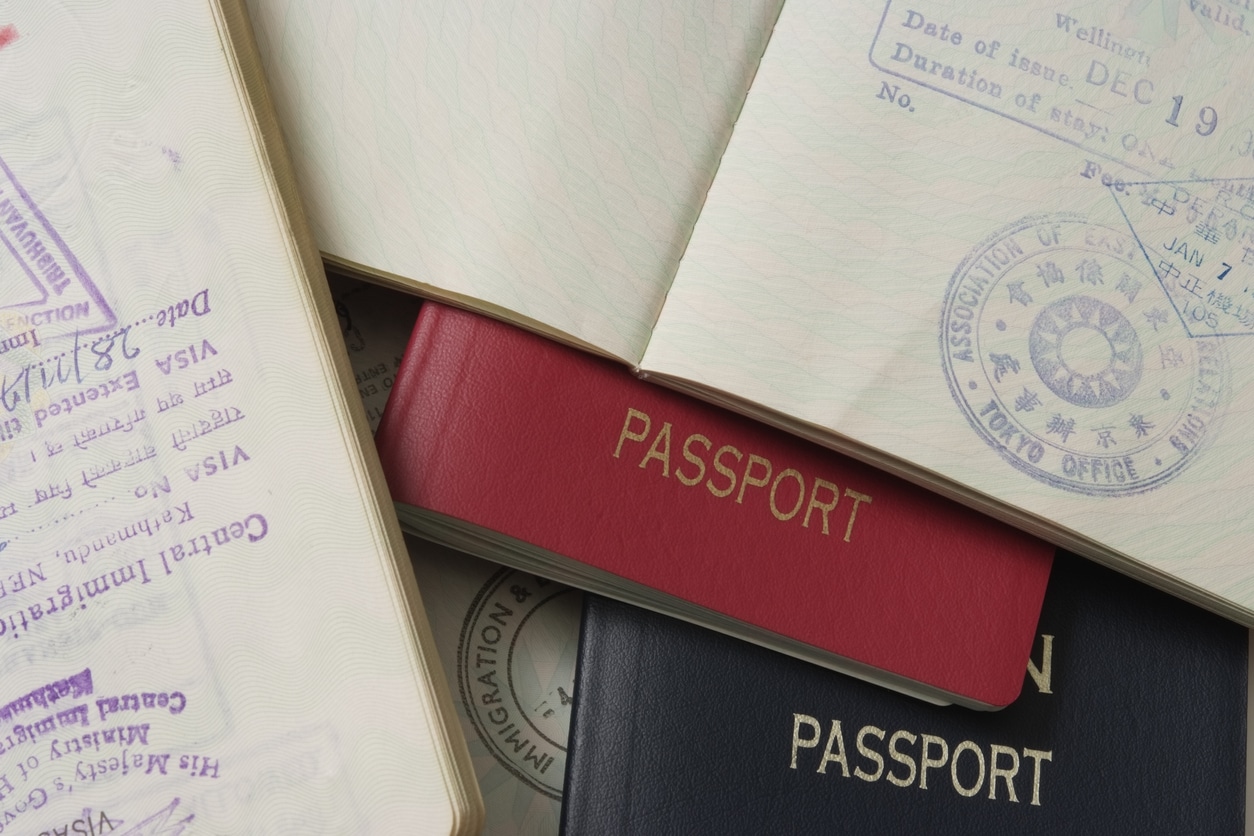- How Do I Study in the USA?
- Research the Best Universities and Colleges
- Contact a College Advisor
- Choose a University Program
- Apply to the University
- Know the Costs of Studying Abroad
- Apply for Financial Aid
- Accept an Offer of Admission
- Apply for a Student Visa
- Prepare for Departure to the US
- Housing for International Students
- Important Necessities for Students
- Conclusion
Choosing to study abroad in the United States is a life-changing choice that will open up many opportunities for your future. You will join the ranks of over one million international students who have made the same decision. Studying in the USA offers numerous benefits, including career assistance and a culturally diverse environment.
If you’re an international student seeking guidance on selecting a college, continue reading our guide to US universities. We will cover the essentials of studying in the USA, including the process of applying to US colleges and universities.
How Do I Study in the USA?
As an international student, your journey in the US starts with choosing the university and academic program you want to enroll in. An associate degree from a US university typically takes two years to finish, while a bachelor’s degree usually requires three to four years of study. For those seeking further education after obtaining a bachelor’s degree, a graduate school is an option.
Graduate or postgraduate options include a master’s degree, which takes two years to complete, and a doctorate or Ph.D., which typically requires three or more years of study. Unlike associate’s and bachelor’s degrees, which are usually more general, graduate master’s and doctorate programs are focused on a specific academic field.
Planning to Study Abroad in the USA? Read these articles
Research the Best Universities and Colleges
You can start your search for information on studying in the USA by visiting the College Navigator site of the U.S. Department of Education. This site allows you to search for associate’s, bachelor’s, and advanced degrees (e.g., master’s and doctorate). Other websites, such as College Board’s Big Future, offer options for searching for undergraduate colleges and universities across various programs, features, and characteristics.
To find the best colleges for international students, consult college rankings. While many countries have official government lists ranking their top universities (e.g. league tables in the UK), the US does not have public standardized college rankings. Instead, there are several private companies that rank US colleges, such as U.S. News & World Report’s Best Colleges, which ranks universities and colleges across various categories, including Top Universities for International Students.
Other well-known college ranking lists include Forbes, The Princeton Review, and Times Higher Education. International students in the US can use these rankings to evaluate the quality of education at various colleges. However, it’s important to remember that rankings should not be the sole factor in choosing a university.
A Shorelight advisor can also serve as a guide for international students, helping you identify universities that are welcoming to students from around the world and align with your academic and professional goals.
Boost your career with an MS in Data Analytics in the USA. Hone analytical skills, fuel your passion for insights, and unlock new career possibilities. Explore our cutting-edge programs and kickstart your journey to success!
| MS in Information Science: Machine Learning – The University of Arizona |
| MS in Artificial Intelligence – Walsh College |
| MS in Data Analytics – Oklahoma City University |
Contact a College Advisor
Gaining insights from an expert in US higher education can assist you in learning about how to study in the US and locating colleges that suit your academic pursuits, personal tastes, and career aspirations.
For a firsthand encounter with American universities, you can attend college fairs or university exhibitions in your area or school, which showcase several US higher education institutions. There may also be online webinars featuring university experts that you can participate in from the comfort of your own home.
Choose a University Program
For international students in the USA, choosing the right colleges to apply to might depend primarily on their academic focus, or major. If you have multiple interests, you may opt for a double major or a minor. If you are uncertain about your major, don’t worry – many students change their minds during their time in college, and 40% of undergraduates start with an undeclared major.
When considering which university to study Abroad in the USA, it is important to think about the kind of university experience you want to have. Ask yourself questions like: Do you prefer a large or small university, a public or private college, a rural, small town, or an urban campus? What activities and organizations do you want to join?
Along with academics, other factors to consider when researching colleges in the US include location, climate, admission requirements (tests, costs, scholarships), services for international students, campus facilities, and job placement rates.
For graduate programs, rankings from sources such as U.S. News & World Report’s Best Graduate Schools can be a useful tool, but it’s important to also consider other important questions like start date, application requirements (standardized tests), student housing, internship opportunities, and international student services.
Apply to the University
After you have chosen the course you want to study and have made a list of a few universities that you’re interested in, it’s time to start the application process. You can apply online through each university’s website or through a centralized platform like the Common App, which is accepted by almost 900 colleges. The method you choose may vary based on the university. Regardless of the method, you’ll be asked to submit specific documents required by the university.
Complete College Applications and Tests
UNDERGRADUATE STUDENT APPLICATIONS
Once you have decided on a program and a list of universities, it’s time to apply. American universities typically require the following from international student applicants:
- Official transcripts from all previous schools attended
- Scores from standardized tests, such as the SAT or ACT
- English proficiency test scores, such as the TOEFL, IELTS, iTEP, or PTE Academic
- A personal essay or statement of purpose
- Letters of recommendation from teachers or other professionals
- A copy of your passport to verify your identity and citizenship.
The application process can be completed online through each university’s website or through a third-party platform such as the Common App, which is accepted by nearly 900 colleges. Some universities may also have the option to apply through Shorelight.
When applying to colleges and universities in the USA, it’s important to take note of each institution’s admission requirements. While some colleges and universities share common requirements, there may be some additional requirements as well.
In general, American universities require the following from international student applicants: transcripts, standardized test scores, English proficiency test scores, an essay, recommendations, and a copy of your valid passport.
Some colleges may also require proof of financing and an interview with staff or alumni abroad. It’s important to take note of the application deadlines, which can be as early as November or December for selective colleges that admit students through early action or early decision. For international students who are considering a Shorelight partner university, there is a separate online application available and many do not require essays or SAT/ACT scores.
GRADUATE STUDENT APPLICATIONS
When applying to a graduate program as an international student in the US, there are several requirements you may need to fulfill. These include:
- Transcripts of your bachelor’s degree studies
- Scores from exams such as GRE/GMAT and English proficiency tests like TOEFL, IELTS, iTEP, or PTE Academic
- A statement of purpose outlining your goals and objectives
- A research proposal
- Recommendations from professors in your field
- A copy of your passport
- Proof of funding to cover the cost of your education (excluding any scholarships you may receive).
International students applying to graduate programs may be required to participate in either an in-person or virtual interview with the admission committee. The interview can be conducted through video conferencing or similar technology.
Graduate applications can typically be submitted online through the university’s website. There is no central application platform, like the Common App, for graduate programs. If you are considering applying to a university through Shorelight, there is a simplified online application process available, and it may not require a GRE, GMAT, or a Statement of Purpose for consideration.

Know the Costs of Studying Abroad
The cost of attending a college in the United States is comprised of tuition, fees, living expenses, books, and health insurance and is billed annually. Despite the high cost of education in the US, there are options for reducing the cost through scholarships based on academics, athletics, arts, and service, as well as need-based financial aid like grants for international students, which vary by institution.
Graduate programs are typically shorter than undergraduate programs and often have a similar or lower cost per year. While undergraduate students may rely on their families to fund their degrees, graduate students in the US often finance their own education or receive financial assistance from the universities they attend.
Apply for Financial Aid
If you have financial constraints for paying for your college education, be sure to inquire about available scholarships, grants, assistantships, and fellowships for international students at the colleges you’re applying to.
When applying for a Master’s degree, academic merit scholarships and graduate assistantships may be options. For PhD programs, funding assistantships and fellowships may also be available. When considering colleges, don’t dismiss them solely based on the total cost, investigate if they offer financial aid for international students in the US to help cover expenses.
Accept an Offer of Admission
Receiving multiple offers of admission for undergraduate study in the US is an exciting moment, but it also means you need to make a crucial decision about which university to attend.
If you applied for an early decision, you will find out if you are accepted before January 1st. For those with application deadlines in January or February, you can expect to receive your admission results in late March or early April. If you applied for a college with rolling admissions, you will likely be notified of the decision within a few weeks, based on when you applied.
Choosing the right university can be challenging, especially with multiple offers of admission. Consider your interactions with university representatives, students, and alumni, as well as life on each campus, to make an informed decision. If possible, seek out opinions from current students from your home country.
Once you have made your choice, carefully review your admission letter or email for the next steps, such as accepting the offer, obtaining the I-20 form for your student visa, and arriving on campus for the start of classes. Many US colleges require a deposit for tuition and housing by a specific deadline to secure your place.
Apply for a Student Visa
Once you’ve chosen where you want to study in the US, the next step is obtaining your visa. There are three main visa types available, each with its own eligibility criteria:
- F-1 Visa: This visa allows you to study at US colleges or universities, either with funding from family or friends, or with personal funds. You are permitted to work part-time on campus, with a maximum of 20 hours per week during academic terms.
- J-1 Visa: This visa is for those participating in study and work exchange programs at US colleges or universities approved by the U.S. Department of State Bureau of Educational and Cultural Affairs. Funding must come from an educational or non-profit sponsor. On a J-1 visa, you are restricted from working off campus, but have the same on-campus work restrictions as F-1 students.
- M-1 Visa: This visa is for those pursuing vocational studies. It permits you to study at institutes certified by the Student and Exchange Visitor Program (SEVP), and funding may come from friends, family, or personal funds. On an M-1 visa, you are restricted from working off campus and can only work on campus for a maximum of six months.
To obtain an F-1 or M-1 visa, you will require an I-20 form, while a J-1 visa requires a DS-2019 form. Both forms include personal information such as your full name, date of birth, SEVIS ID number, academic program, English proficiency level, start date, and funding sources.
Whether you will receive an I-20 or DS-2019 form along with your admission letter depends on the university. Some universities will provide the form if you have demonstrated that you have the necessary funds for a year of study and do not need to make a deposit. Others will only issue the form once you have provided proof of funding and paid a deposit or received institutional financial awards.
After obtaining the I-20 or DS-2019 from your college or university, you must follow these four crucial steps:
- Pay the SEVIS I-901 fee of $350 online and save the electronic SEVIS fee receipt.
- Fill out the online DS-160 form for the non-immigrant visa.
- Schedule a visa interview at the US embassy or consulate.
- Attend and complete the interview.
For additional information on the DS-160 form, you can refer to our article “DS-160 Form Explained” or reach out to a Shorelight advisor. Our advisors can serve as your guide to US universities, offer personalized visa support, and help you navigate the student visa process as you study in the USA as an international student.
Prepare for Departure to the US
As you make preparations for your student visa, it’s time to start thinking about your actual arrival at the university. Your college or university will inform you of the required arrival date for the start of the academic term or for an optional orientation. It is advisable to arrive early and give yourself enough time to prepare before your first day of classes.
Booking your travel should be a top priority. There are three key dates to keep in mind: (1) immigration regulations require you to arrive in the US no more than 30 days before the program start date indicated on your I-20 form; (2) you must arrive by that program start date.
Before your departure, make sure to double-check that you have all the necessary documents with you, including your I-20 form, financial documents, admission letter, SEVIS fee receipt, and passport with an F-1 student visa. Keep these in a place where you can easily access them, such as a carry-on bag. Additionally, it is a good idea to have official copies of your transcripts, immunization records, medication, and other essential items with you in your carry-on.
Housing for International Students
Universities may offer various options for student housing, including dorms, apartments, shared houses, etc. Research your options before leaving and choose the best one for your needs.
Important Necessities for Students
International students in the US may face differences in campus life compared to home. Before arrival, it’s a good idea to prepare a list of essential items to bring. This may include:
- A cell phone (check with the service provider if it will work in the US)
- A bank account near campus (check if any benefits are offered through university affiliation)
- An adapter for electronics (as some chargers may not work with US power sockets)
- Important documentation (health insurance, visa, passport, recommendation letters, test scores)
- Personal medication (check availability near campus and bring extra in case of emergency)
Conclusion
To gain further information on studying in the USA, check out the USA.gov website. As for your next steps, attend classes, put in effort in your studies, and connect with students from diverse backgrounds. Best of luck in your academic pursuits as an international student in the USA!









